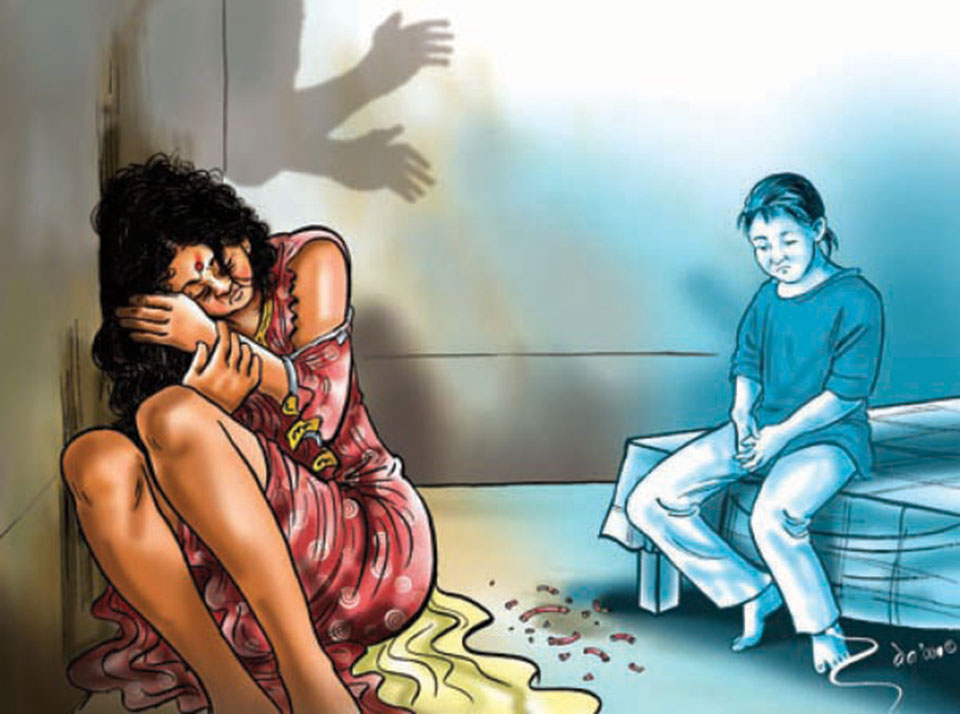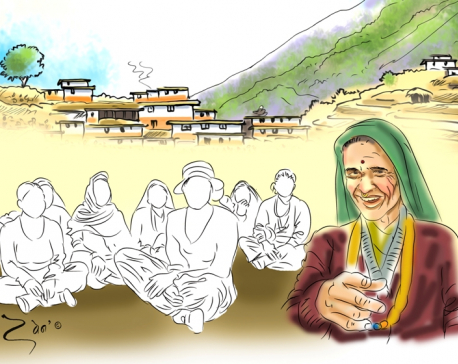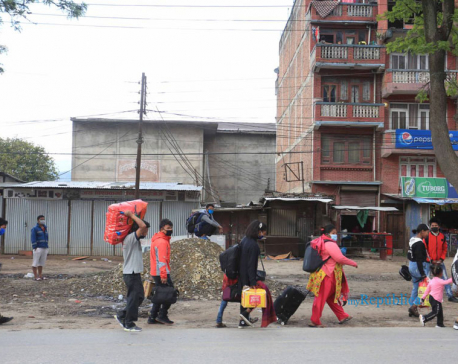
OR
#OPINION
'Victim blaming'- Nepali society's response to sexual violence
Published On: April 14, 2024 09:00 AM NPT By: Aastha Pokharel

Multiple studies show that in most sexual assaults, the attacker is someone known and trusted by the victim.
Numerous youths demanded justice for Lamichhane and directed curses towards the victim. Even after his guilty verdict, social media overflowed with support for the convicted individual. There was a collective sentiment that the leg spinner was a national treasure, with some advocating for leniency due to his cricket career.
Why did she go out alone at night? Did you see her clothes? Why did she agree to go with him? What did she expect would happen? Why didn’t she report it immediately? These are the questions frequently directed at victims of sexual violence. They imply that the victims themselves are responsible for what happened. These questions collectively represent a form of victim-blaming, which is the act of holding the victim accountable for a crime rather than placing responsibility on the perpetrator.
In the past, if someone was a victim of rape or sexual violence, they were often blamed and punished by the government. In medieval Europe, people thought it was a woman's fault if she was raped because her beauty was so strong that it forced men to rape her. Rape was regarded as a crime of passion rather than of violence.
Scholars note that an ancient Hindu text, Brihaspati Smriti, suggested that a woman who was defiled and harmed in a sexual assault should be covered in ashes. It says that if a woman has been enjoyed against her will, she should be kept in her home, well-protected, covered in ashes, and given just basic care. To make up for what happened, she should do a certain penance in case she had intercourse with her equal in caste. However, if a man of an inferior caste has enjoyed her, she shall be abandoned and put to death.
In the present context too, victims are subjected to inappropriate questioning. This includes inquiries into their sexual history, drinking habits, and even their clothing choices. There is a widespread societal tendency to place the burden of blame on them rather than on the perpetrator. The focus on the victim's behavior, then and now, tends to divert attention from the core issue of sexual violence.
Even news coverage in Nepal, especially proliferating YouTube media houses focuses on where the victim was going, or who she was with, in ways that communicate that she put herself in danger or was asking for it. In our society, a man's tendency to misbehave is taken for granted justified by the notion that boys will be boys. When young boys are chasing after crushes, teasing, and stalking they are ignored and seen as harmless fun. On the flip side, girls of the same age may face their first experience of sexual violence in public spaces.
The family often teaches young girls to adjust to this catcalling, stalking, and harassment not by confronting the perpetrator but by protecting themselves. Therefore, women are told not to wear revealing clothes, make eye contact with men, or attract unwanted attention from boys. So, most women grow up believing that if a boy misbehaves it's their fault for provoking him. Unfortunately, this way of thinking makes us more likely to blame the victim instead of questioning the actions of the perpetrator. According to the Nepal Police report of 2021/2022, a total of 2380 rape cases were reported. It is estimated that many sexual violence cases go unreported due to associated stigma and blame.
The very public nature of cricketer Sandip Lamichhane's case highlighted the depth of the issue – the tendency to scrutinize the survivor. Gaushala 26 filed a case against Lamichhane accusing him of rape. When the cricketer faced accusations, many people shifted blame onto the girl. Some argued that she lacked good character, pointing to her decision to enter a hotel room with him. Others insinuated that she aimed to defame the cricketer or suggested that she had somehow asked for it by agreeing to be in the same room. Victim-blaming narratives, such as claims that she sought money or orchestrated the incident, were widespread.
Upon the accused's release on bail, he was warmly embraced and garlanded by the public. Numerous youths demanded justice for Lamichhane and directed curses towards the victim. Even after his guilty verdict, social media overflowed with support for the convicted individual. There was a collective sentiment that the leg spinner was a national treasure, with some advocating for leniency due to his cricket career. The victim faced not only the trauma of the incident itself but also the harsh judgment and skepticism from society. Such scrutiny perpetuates a culture of silence and discourages others from speaking out.
Multiple studies show that in most sexual assaults, the attacker is someone known and trusted by the victim. This tells us that there's no safe situation or right way to behave that prevents sexual violence. It can happen to any woman at any time, whether she dresses modestly or not, whether she is sober or drunk, or whether she is outside or inside the house. Since there is no foolproof method for women to avoid sexual violence, it is high time that we realise women’s actions are not the problem.
The way forward
Nepali society needs comprehensive sex education to challenge stereotypes and promote empathy. We need to teach people about relationships and consent. If we provide effective lessons that illustrate what's right and wrong, the youth in Nepal can confidently stand up against victim-blaming narratives.
The media plays a vital role in shaping public opinion. What we see on TV or read in the news can change how we think. It's crucial for the media to share stories without making things up or spreading wrong ideas. If it focuses on the real facts and refrains from adding fabricated details, people will have a better understanding of the situation reported. To protect survivors from secondary victimization, the legal frameworks should be strengthened.
Sensitizing law enforcement, judiciary, and healthcare professionals can create an environment where survivors feel safe and supported. Advocacy campaigns and community engagement initiatives can reshape traditional ways of thinking. By listening to survivors, we can create a safe space for them to share their stories. With this approach, more people will feel encouraged and supported to come forward.
You May Like This

Nirmal Purja loses sponsor following allegation of sexual assaults
KATHMANDU, June 6: The allegation of sexual assaults by renowned climber Nirmal Purja has prompted one of his major sponsors... Read More...

Keeping Communities in the Lead
A few months ago, I visited Mugu and Jumla in the Karnali province. During my final site visit, I met... Read More...

Trust the local governments
The Constitution of Nepal-2015 has allocated the power of state among one federal government, seven provincial and 753 local governments,... Read More...










Just In
- Heavy rainfall likely in Bagmati and Sudurpaschim provinces
- Bangladesh protest leaders taken from hospital by police
- Challenges Confronting the New Coalition
- NRB introduces cautiously flexible measures to address ongoing slowdown in various economic sectors
- Forced Covid-19 cremations: is it too late for redemption?
- NRB to provide collateral-free loans to foreign employment seekers
- NEB to publish Grade 12 results next week
- Body handover begins; Relatives remain dissatisfied with insurance, compensation amount








Leave A Comment